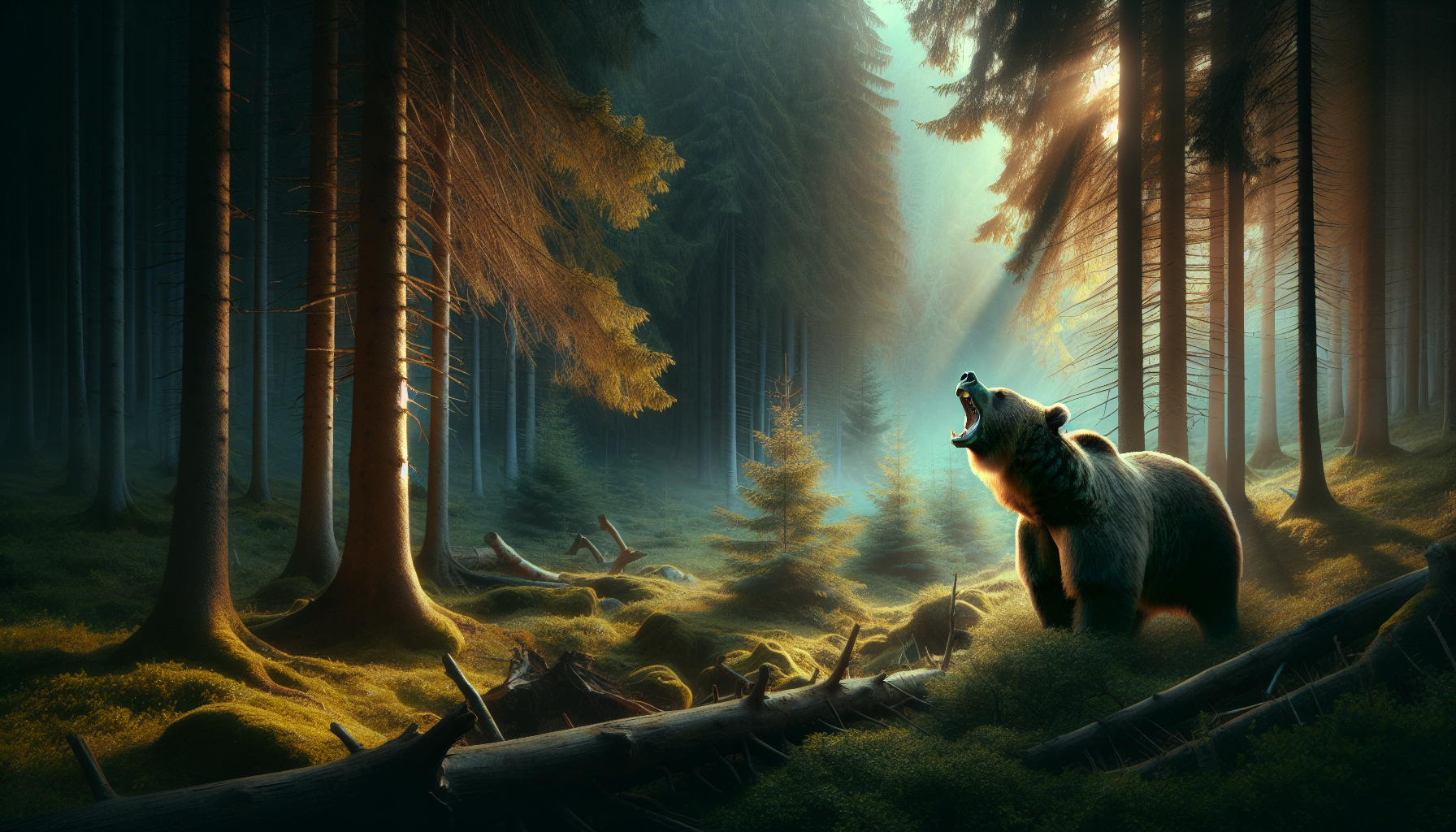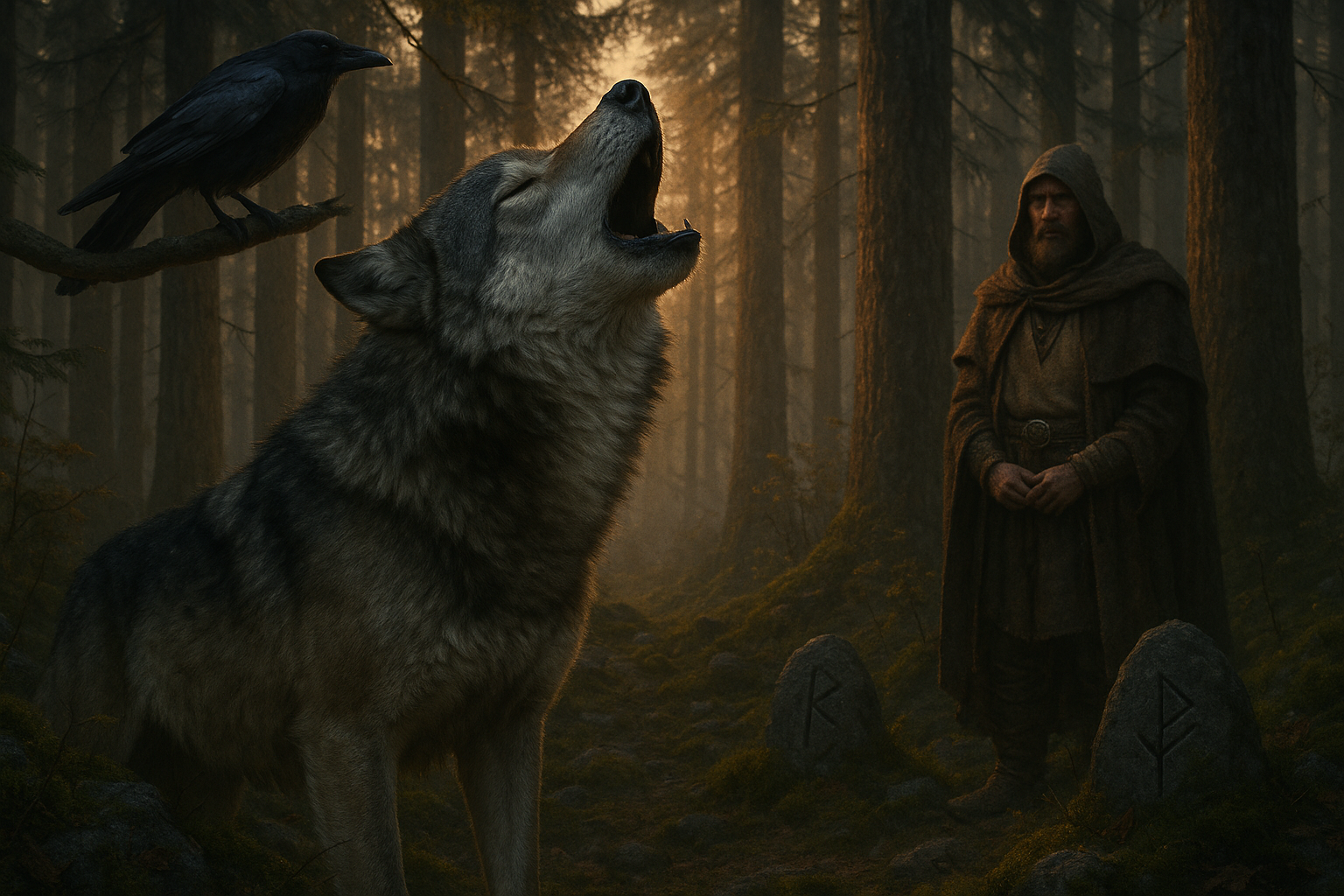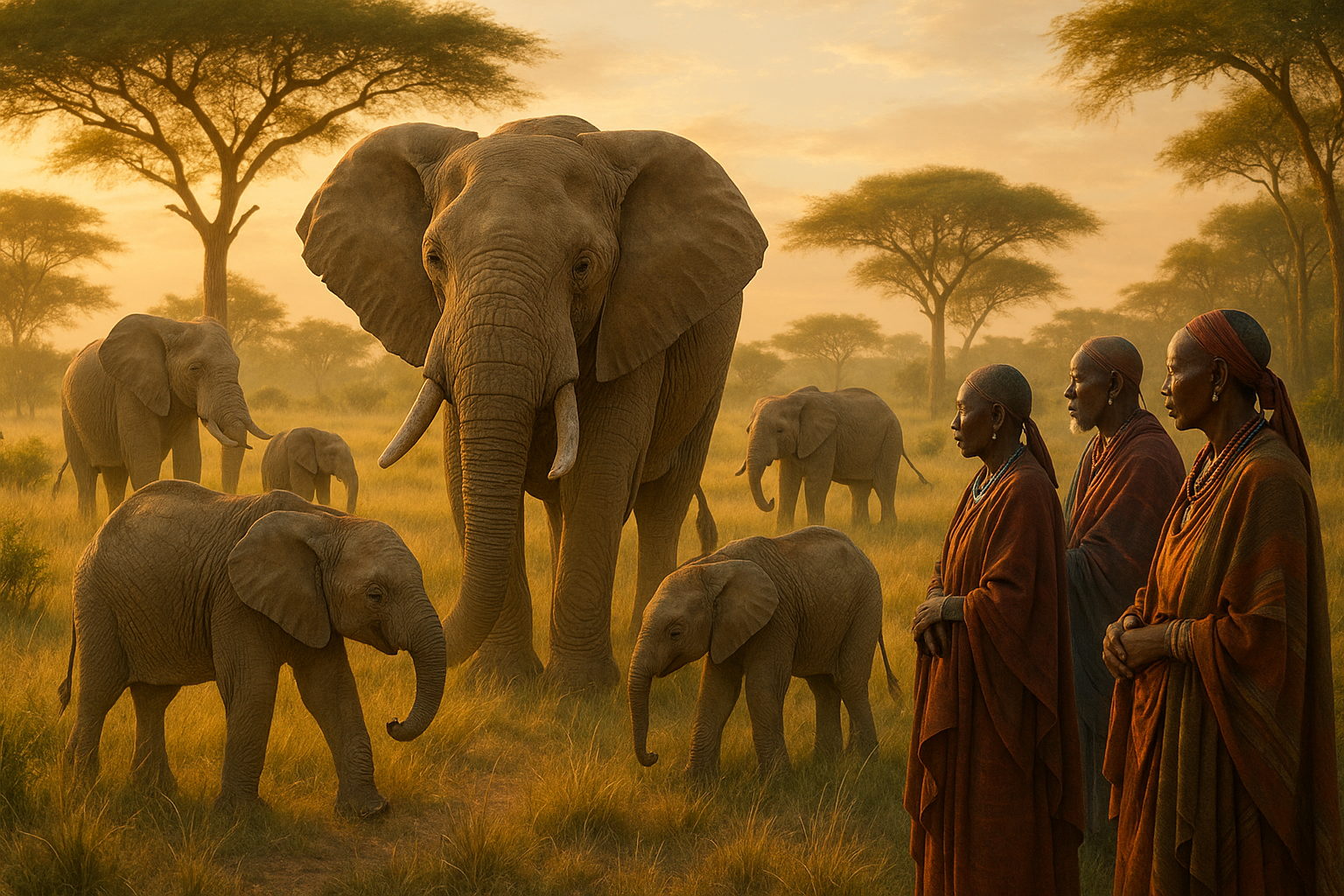In the quietude of the forest, where the whispering of leaves intertwines with the rustling of unseen creatures, an ancient sound echoes through the trees—a growl so profound it seems to reverberate through the very soul of the earth. This is the growl of the bear, a creature revered and feared, a symbol of both terror and beauty. Across numerous native cultures, bears are not just animals; they are powerful spirits, guardians, and symbols of strength and introspection. But what is it about the bear’s growl that has inspired countless legends and myths? Why does this singular sound hold such sway over the imagination of so many indigenous peoples? In this exploration, we delve into the mesmerizing and formidable world of bear growls in native legends, uncovering the profound lessons and mystical allure they hold.
From the icy realms of the Inuit in the Arctic to the dense forests of the Algonquin in the northeast, bear growls have been interwoven into the very fabric of native folklore. These growls are not merely sounds but are considered messages from the spiritual realm, bridging the gap between the physical world and the metaphysical. They serve as omens, guides, and sometimes warnings. For the Inuit, the bear, or “nanook,” is the master of the bears, and its growl is a call to respect the natural world and maintain harmony with it. Meanwhile, among the Haida of the Pacific Northwest, the bear’s growl is a reminder of the interconnection between all living beings, a call to honor and protect the delicate balance of life.
Yet, there is a terrifying beauty in these growls that transcends mere storytelling. To the native tribes, each growl carries the weight of wisdom, a lesson to be heeded. It speaks of the raw, untamed power of nature, the kind that demands both reverence and fear. This duality is at the heart of many native legends, where bears are both destroyers and protectors, reflecting the unpredictable, often harsh realities of life itself. In the stories passed down through generations, the growl of a bear heralds a time of change, a moment of introspection, or an encounter with the sacred. As we journey through these tales, we will uncover how the bear’s growl has been used as a tool for teaching, a source of inspiration, and a means of connecting with the divine.
The Historical and Cultural Significance of Bear Growls
The bear growl has been an enigmatic symbol in various indigenous cultures worldwide. Often revered and sometimes feared, the bear’s vocal expression is more than just a sound—it’s a profound element of folklore and spirituality. In Native American traditions, for instance, the bear’s growl is considered a voice of the wilderness, representing both the power and the mystery of the natural world. The growl of a bear is often seen as a call to courage, resilience, and introspection. In many legends, this sound is depicted as a divine message, an omen, or a guide for those who venture into the forest.
The significance of the bear growl extends beyond mere mythology. It is embedded in the cultural practices and beliefs of many tribes, influencing rituals, art, and storytelling. These growls are often featured in ceremonies where their sound is believed to communicate with the spiritual realm, acting as a bridge between humans and the mystical forces of nature. This cultural symbolism reflects a deep respect for bears, viewing them as powerful totems and guardians. By understanding the historical context and cultural beliefs surrounding bear growls, we can gain a deeper appreciation for their role in human history and the natural world.
Listen to this enlightening YouTube video that delves into the history and cultural significance of bear growls: The Power of the Bear Growl in Native Culture – Channel Name. The video provides a compelling exploration of how different tribes interpret and integrate the bear growl into their traditions. It’s a fascinating watch for anyone interested in indigenous cultures and their connection to nature. 🎥
Bear Growls: A Deeper Look into Their Acoustic Properties
The acoustic properties of bear growls are a subject of interest for biologists and audio engineers alike. Unlike other animal vocalizations, the bear growl encompasses a wide range of frequencies and volumes, making it a unique auditory phenomenon. These growls can vary from deep, resonant rumbles to high-pitched roars, each serving different purposes in the bear’s communication repertoire. Scientists have discovered that these sounds are not only a means of expressing aggression or dominance but also play a role in mating rituals and establishing territories.
To better understand the complexity of bear growls, researchers have conducted numerous studies using spectrogram analysis and field recordings. These studies reveal that the growls can convey a variety of messages, from warnings to potential threats to calls for mates during breeding season. The nuanced nature of these growls indicates a sophisticated level of communication among bears, challenging previous assumptions about their behavioral capabilities. As we continue to study these sounds, our understanding of bear behavior and ecology is continually enriched.
Here’s a table comparing the acoustic properties of different bear species and their growls:
| Bear Species | Frequency Range | Common Growl Types |
|---|---|---|
| Grizzly Bear | 100-500 Hz | Rumbles, Roars |
| Polar Bear | 150-600 Hz | Deep Growls, Bellows |
| American Black Bear | 200-700 Hz | Grunts, Snorts |
For an in-depth analysis of bear growls and their acoustic properties, check out the comprehensive studies conducted by wildlife biologists. These findings are paving the way for new discoveries about animal communication and behavior. Don’t forget to watch the video linked above to see how these scientific insights correlate with cultural interpretations.
The Role of Bear Growls in Native American Spirituality
In Native American spirituality, the bear growl is not merely a sound but a profound symbol of spiritual awakening and guidance. Many tribes believe that the growl carries the wisdom of the bear spirit, offering protection and insight to those who are attuned to its messages. This belief is evident in numerous tribal stories where the bear acts as a spiritual guide, leading individuals through challenging times and helping them connect with their inner strength.
Traditionally, shamans and spiritual leaders would often meditate or perform rituals in the presence of bear growls, seeking visions and guidance. The growl is perceived as a sacred sound, resonating with the energies of the earth and the cosmos. It’s considered a call to align with one’s higher purpose and to embrace the transformative power of nature. These practices highlight the deep spiritual bond between humans and bears, emphasizing the importance of living in harmony with the natural world.
Here’s a short list of how bear growls are integrated into spiritual practices:
- Used in healing ceremonies to invoke protection and strength.
- Incorporated into meditation practices to enhance spiritual awareness.
- Interpreted as messages or omens during vision quests.
Modern Interpretations and Influences of Bear Growls
In contemporary culture, bear growls have transcended their traditional roles, influencing various aspects of art, music, and media. Filmmakers often incorporate bear growls into soundtracks to evoke feelings of tension, awe, or primal fear. These sounds, when paired with visual storytelling, create a visceral experience that resonates with audiences on an instinctual level. Musicians, too, have drawn inspiration from the raw power of bear growls, incorporating them into compositions to convey themes of strength and resilience.
Additionally, the bear growl has become a popular motif in literature and art, symbolizing the untamed and mysterious aspects of nature. Writers often use the growl to represent a character’s internal struggle or transformation, drawing parallels between human emotions and the natural world. This modern reinterpretation of bear growls demonstrates their enduring impact and the universal fascination with these majestic creatures.
As our understanding of bear growls continues to evolve, so too does their influence on modern society. By embracing both the scientific and cultural aspects of these sounds, we can appreciate their role in shaping our perceptions of nature and ourselves. Whether through art, music, or personal reflection, the power of the bear growl continues to inspire and challenge us to explore the depths of our own potential.

Conclusion
Unleashing the Power Within: The Terrifying Beauty of Bear Growls in Native Legends
In conclusion, our exploration into the world of Native legends has unveiled the profound and complex relationship between indigenous cultures and the bear, a creature both feared and revered for its strength and spiritual significance. Through the lens of various tribes, we have observed how the bear, with its mighty growls and formidable presence, symbolizes power, protection, and a deep connection to the natural world. These legends, passed down through generations, highlight the bear not just as an animal but as a spiritual guide, a source of wisdom, and a guardian of the wilderness.
One of the key points we delved into was the representation of the bear in different Native American cultures. For many tribes, such as the Cherokee and the Sioux, the bear is a totemic figure, embodying the virtues of courage and leadership. Its growls are not merely sounds but messages from the spirit world, calling for introspection and respect for nature. These legends teach us that the bear’s growl is a reminder of the balance between fear and beauty, power and humility.
Additionally, we explored how bear growls feature prominently in rituals and storytelling, serving as metaphors for life’s challenges and triumphs. Through ceremonial dances, chants, and narratives, communities invoke the spirit of the bear to seek guidance and protection. This cultural practice underscores the importance of storytelling in preserving and passing on traditional wisdom, ensuring that the bear’s lessons endure across generations.
Furthermore, we discussed the relevance of these legends in contemporary society. In a world that often prioritizes technological advancement over ecological preservation, the bear’s symbolic growl calls us to reconnect with nature and recognize our role as stewards of the Earth. These legends inspire us to find harmony with the environment, much like the bear, which navigates its habitat with both strength and grace.
As we conclude this journey, it is essential to reflect on the significance of keeping these stories alive. They offer us timeless lessons on resilience, community, and the importance of respecting all living beings. The bear, with its terrifying yet beautiful growl, invites us to embrace our inner strength and confront our fears, just as the tribes have done for centuries.
We encourage you, dear reader, to delve deeper into the rich tapestry of Native legends and discover the myriad ways in which these stories can inspire and inform our modern lives. Consider sharing these insights with others, fostering a dialogue that honors and respects indigenous cultures and their invaluable contributions to our understanding of the natural world.
Feel free to share your thoughts and experiences in the comments below. How have these legends resonated with you? Have they changed your perspective on nature and its creatures? Engage with us on this journey of discovery and share this article with others who might benefit from the wisdom of the bear. 🌿🐻
For further exploration, you may want to visit resources such as the or explore articles on Native mythology in publications like Smithsonian Magazine. These sources offer extensive insights into the cultural narratives that continue to shape our understanding of the natural world.
Thank you for joining us in unraveling the power within bear growls and Native legends. May these stories continue to inspire and guide you in your own life, as they have for countless others throughout history. 🌟
Toni Santos is a sound storyteller and folklore researcher whose creative path bridges the mystical and the biological through the lens of bioacoustic folklore. With an ear attuned to the voices of nature, Toni explores how ancient cultures interpreted birdsong, forest echoes, and animal calls—not as noise, but as messages, omens, and myths encoded in sound.
Rooted in a passion for both natural science and ancestral lore, his work uncovers the forgotten connections between ecosystems and oral traditions. From the whispered warnings in owl cries to the songs of frogs heralding rain, Toni’s narratives evoke a time when humans listened to nature with reverence and meaning.
Drawing on a background in ecological arts and auditory storytelling, Toni merges field recordings with mythic imagery, turning natural sounds into cultural artifacts of wonder. His stories do more than entertain—they restore a way of hearing the world that blends intuition, memory, and deep listening.
As the creative force behind Vizovex, Toni offers sonic tales, symbolic soundscapes, and research-based reflections that help others rediscover the sacred language of the wild.
His work is a tribute to:
The mythological significance of animal and elemental sounds
Ancient practices of listening for meaning in nature
The spiritual dialogue between humans and soundscapes
Whether you’re a folklorist, an acoustic ecologist, or a curious listener, Toni invites you into a world where the forest speaks, and every chirp, croak, and howl carries a story—one echo, one legend, one call at a time.



